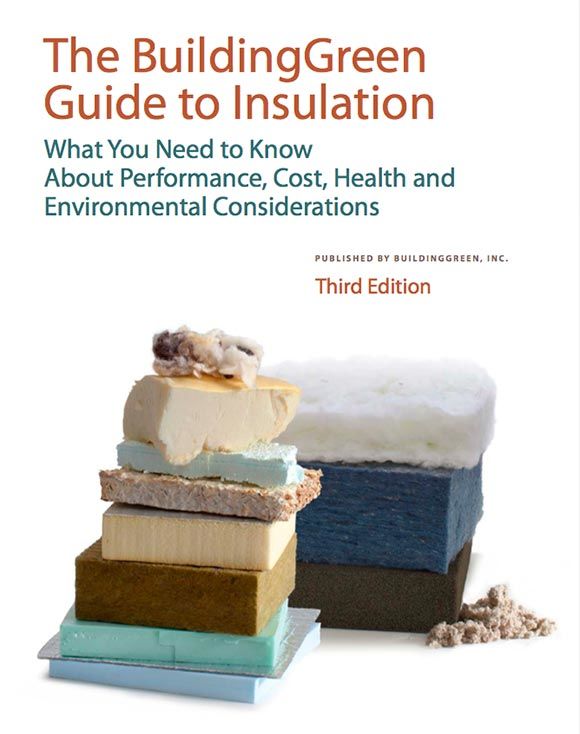PDF Report
The BuildingGreen Guide to Insulation - Site License
Currently not for sale, being updated and re-released in August 2021.
A site license allows your entire organization to access and share the report, and to keep a copy in your library. The site license does not allow multiple users to earn CEUs. If multiple individuals in your organization would like to earn CEUs from this report, please purchase individual copies.
The BuildingGreen Guide to Insulation provides detailed guidance on insulation products and practices, including cost comparisons and detailed recommendations on what insulation to use, and what to avoid. It's a treasure trove of information for architects and designers, builders, and anyone who is actively considering the impact of insulation on the quality of your indoor environment, and the world.
Even well informed professionals have knowledge gaps on the material properties of insulation products as well as building science dynamics relating to insulation, moisture, and air barriers. Filling these gaps, this special report acknowledges that there are no universal right or wrong answers for every project. Instead, it offers guidance to support appropriate material choices—as well as best practices—depending on the project and the budget.
Insulation has a job to do in our buildings: it must perform well, and be durable. Our report helps you understand:
- Moisture dynamics—and how to protect insulation
- How insulation decomposition and decay occurs
- Fire resistance
- R-value drift
At the heart of the report are 13 pages of reference tables and recommendations covering:
- All major (and key niche) insulation types and what they typically cost
- Key performance attributes (we compile this from dozens of individual sources—you won't find this elsewhere): vapor permeability and air barrier attributes
- Quick reference tips on what to use and what to avoid from health and environmental standpoint
After all the background, we provide insulation recommendations for every major application, including: sub-slab, exterior and interior of foundations, attic floors, rafters, cavity-fill (residential and non-residential), and continuous exterior insulation.
How much insulation is enough? How airtight should you be? What window and door specifications should you look for? BuildingGreen’s building envelope recommendations are aimed at defining high-performance goals that we believe all buildings can reasonably achieve.
The BuildingGreen report offers detailed advice on understanding insulation in all major categories:
- Fiberglass, cellulose, cotton, and other fiber-based materials
- Polyisocyanurate, polystyrene, mineral wool, and other boardstock materials
- Closed-cell and open-cell spray polyurethane, cementitious foam, and other spray-in-place products
- Radiant barriers, gas-filled panels, vacuum insulation, and other products
For each category, we cover key health and sustainability considerations, performance issues, and installation recommendations.
Unlike other biased manufacturer information sources, or single-issue environmental sources, BuildingGreen looks at all angles on insulation—as we have throughout our 25-year history. The report considers health and environmental impacts with insulation materials in terms of:
- Energy savings
- Raw material acquisition
- Embodied energy and embodied carbon
- Hazardous constituents
- Ozone-depleting substances
- Greenhouse gases and global warming potential
- Halogenated flame retardants
- Chemical byproducts and residuals
- Know your ingredients
- Fiber shedding
- Moisture and mold
- End-of-life issues with insulation materials
New and updated in the Third Edition
Originally published in 2011, our report is now in its third edition! Here's what's new and updated:
- Updated insulation costs (some of the more sustainable options will surprise you with their affordability)
- Coverage of developments in several insulation types, including phenolic foam, mineral wool, and spray-in-place fiberglass
- Significant updates to our bottom-line recommendations based on major market developments over the last two years
- New guide to insulation options for LEED v4 and the Living Building Challenge: EPDs, HPDs, Declare, and more
- A new afterword on making people (not buildings) comfortable by Z Smith, AIA, LEED Fellow Eskew+Dumez+Ripple
A site license allows your entire organization to access and share the report, and to keep a copy in your library.
The site license does not allow multiple users to earn CEUs. If multiple individuals in your organization would like to earn CEUs from this report, please purchase individual copies.



